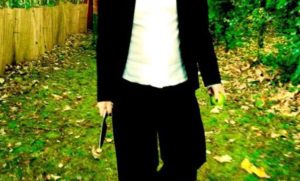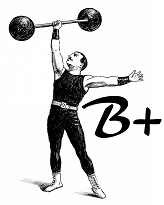’ve watched a handful of shorts since delving into the indie community. The 2016 short, “Layla,” is the first one I’ve seen that didn’t contain any dialogue. Utilizing an interesting musical score, vibrant visuals, and some intermittent narration, the film is intriguing and engaging for its ten-minute run-time.
The film is directed by Jakob Lewis Barnes (who also wrote the screenplay) and Samuel James. Certainly the most interesting thing about the short is the fact that it was recorded in only one day, and the entire thing was filmed on an iPhone 6.
The film is centered around Layla (Eliza Dolan), a captive in a quaint, country-style room who spends most of the day sitting on her bed, hugging her knees with her head down. Her captor (played here by Rachael Reason), skulks around the residence and grounds attending to various tasks such as playing records, worrying about an apple tree outside, and occasionally coming in the room to seemingly terrorize the young girl. A mysterious girl with red hair repeatedly comes to Layla’s window, her purpose unknown.
The most interesting thing about this film is the crisp, captivating cinematography that the crew was able to get out of the iPhone. Sunset-basked country landscapes, bright rooms, and sharp colors greet the viewer almost immediately. The opening, which shows Layla fixing a broken lightbulb, showcases the abilities of the smartphone camera, bright orange flushed against black darkness in a psychedelic effect.
 Layla herself is adorned in a simple wardrobe, but one with effective colors. Draped in an innocent white dress while captive in her room, it’s only later that she wears a red dress as she sees the outside for the first time in what we can only guess to be a long time. Her savior, the women in red who beckons outside, can be seen as life, her captor; the women in black can be seen as death.
Layla herself is adorned in a simple wardrobe, but one with effective colors. Draped in an innocent white dress while captive in her room, it’s only later that she wears a red dress as she sees the outside for the first time in what we can only guess to be a long time. Her savior, the women in red who beckons outside, can be seen as life, her captor; the women in black can be seen as death.
Symbolism using colors is frequent in this film, and guides the viewer through the film’s ten minutes with ease.
The soundtrack is also effective, utilizing low, droning organs to build suspense and intrigue. Absent as Layla explores her surrounding, this is flushed against interesting visuals. One is particularly effective, as a young Layla in chains plays Patty Cake with a young girl who could be her when she was innocent, or could be someone else. We are left to decide.
This film is certainly not about plot, and even as the filmmakers nudge us with suggestions via text on the screen as to what is occurring, viewers will have to use their imagination to wade through this film. And while not a detriment, I wonder if the film would have been stronger if the filmmakers left the text off completely, and simply let the audience decide what the film’s various images represent.

While there is no dialogue, the acting offered by Eliza Dolan is efficient, and shifts from depression, to anxiety, to, in some scenes, simply wonder. One of my favorite scenes is where she wanders by a river in a red dress at the film’s end, which brings the audience along in her curiosity. And, given the fact that we do not know the motive for the women in red or the women in black, it gives us another reason to follow her along unwittingly.
“Layla” is a good movie. It’s a short; if you’re not familiar with them, it might be a strange experience, especially given the film’s dialogue-less presentation. But the cinematography is clean, the score is enchanting, and the film flies by much faster than its’ ten minute run-time. If you are a fan of indies or symbolism-heavy films, this will probably win you over. If you answered no to both questions, however, this one may not be for you.
– by Mark Ziobro


